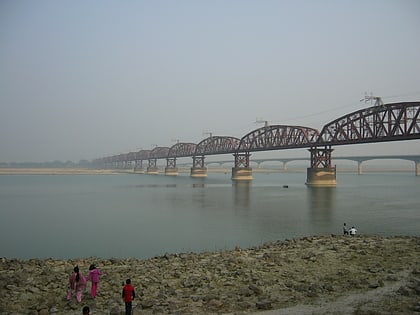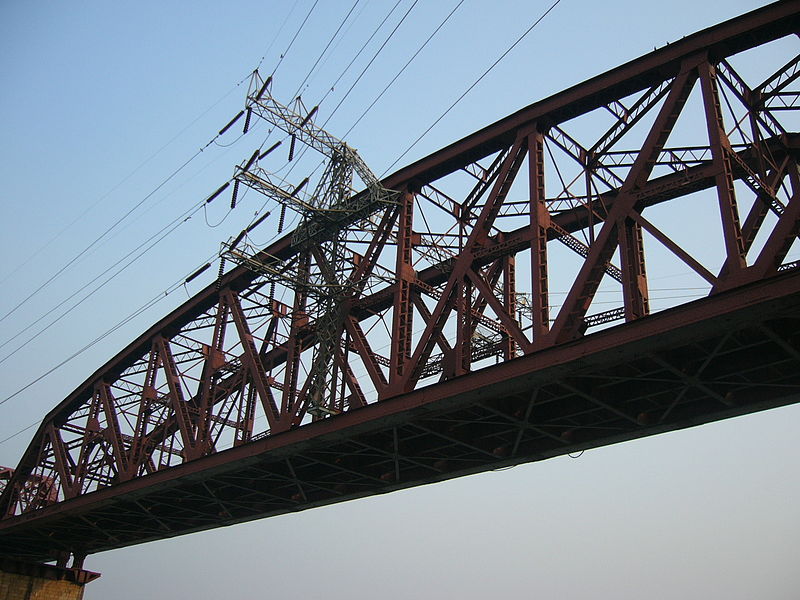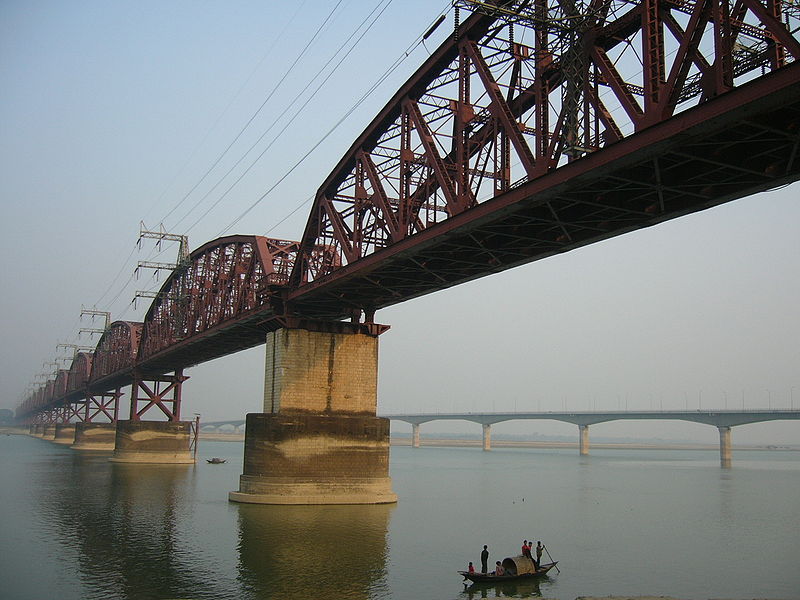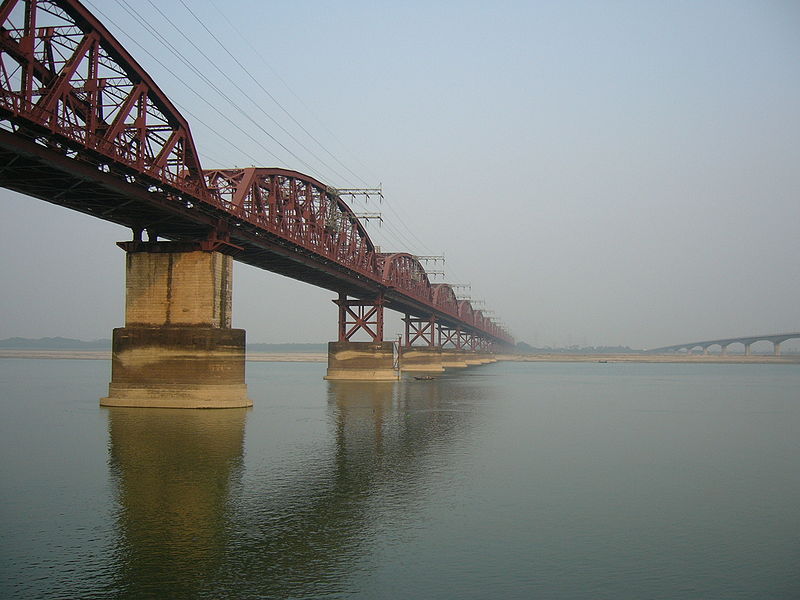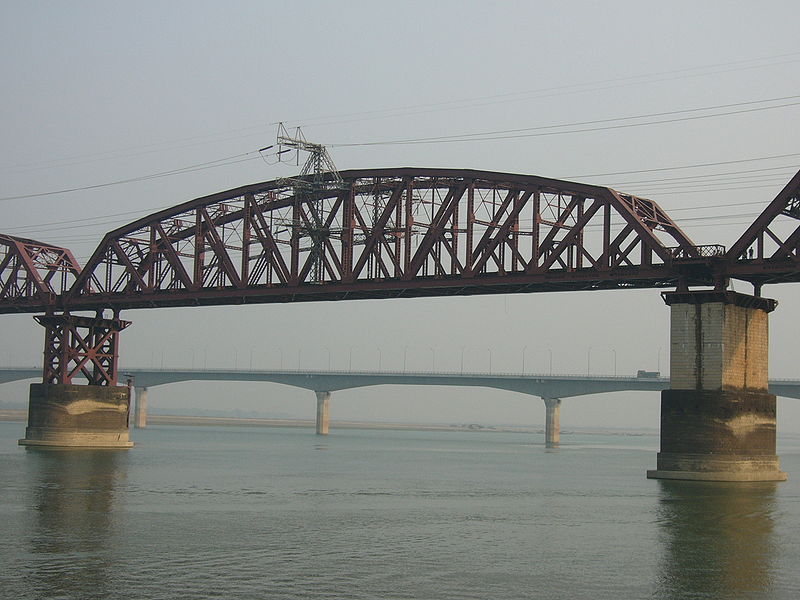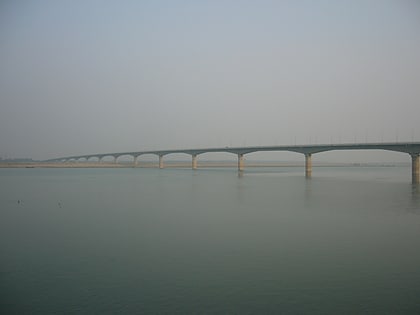Hardinge Bridge
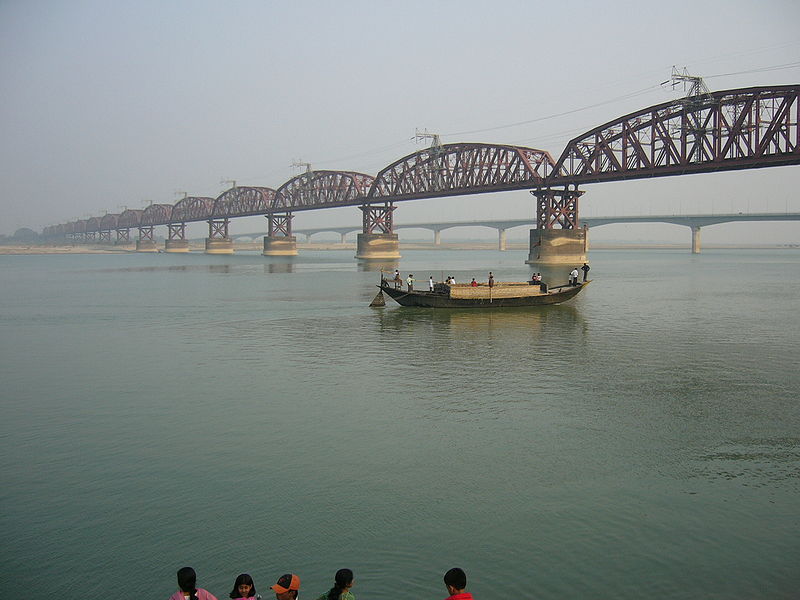
Facts and practical information
Hardinge Bridge, a remarkable engineering achievement, stands as a testament to the industrial prowess of Bangladesh. This steel railway bridge, spanning the Padma River, was constructed in 1915 and remains one of the country's most significant infrastructural accomplishments.
The bridge, named after Lord Hardinge, the then Viceroy of India, was designed to facilitate the transportation of goods and passengers across the river, thereby boosting the region's economy. Measuring approximately 1.8 kilometers in length, it was the longest bridge in the region at the time of its completion.
The construction of Hardinge Bridge was a monumental task, demanding meticulous planning and the collaboration of skilled engineers and laborers. The bridge's design reflects the industrial aesthetics of the early 20th century, with its massive steel trusses and piers, which have withstood the test of time and the region's challenging weather conditions.
In addition to its practical role in transportation, Hardinge Bridge has become an iconic landmark in Bangladesh, attracting tourists who come to marvel at its grandeur and the scenic beauty of its surroundings. The bridge not only connects districts but also serves as a symbol of the nation's historical heritage and engineering ingenuity.
Khulna
Hardinge Bridge – popular in the area (distance from the attraction)
Nearby attractions include: Lalon Shah Bridge, Paksey.
